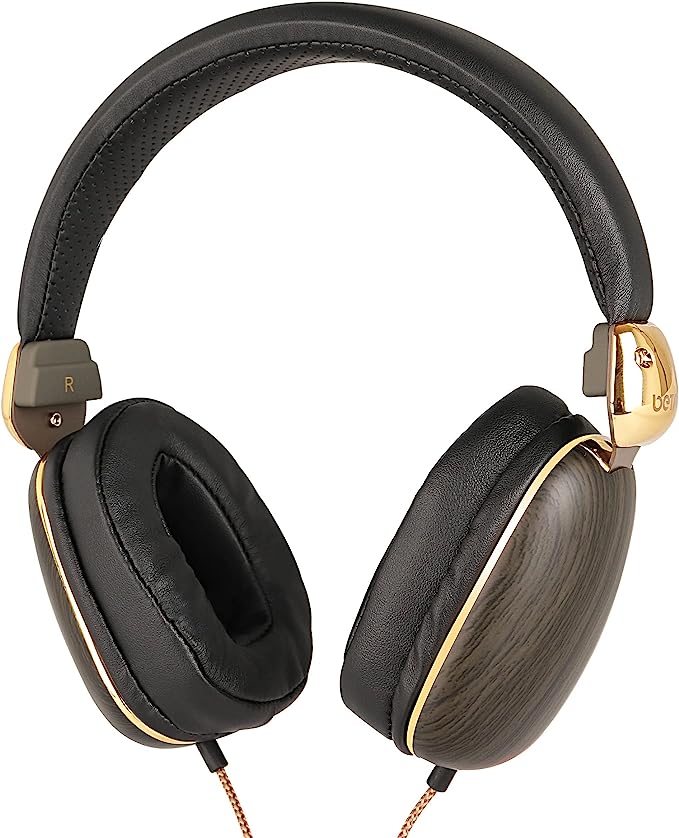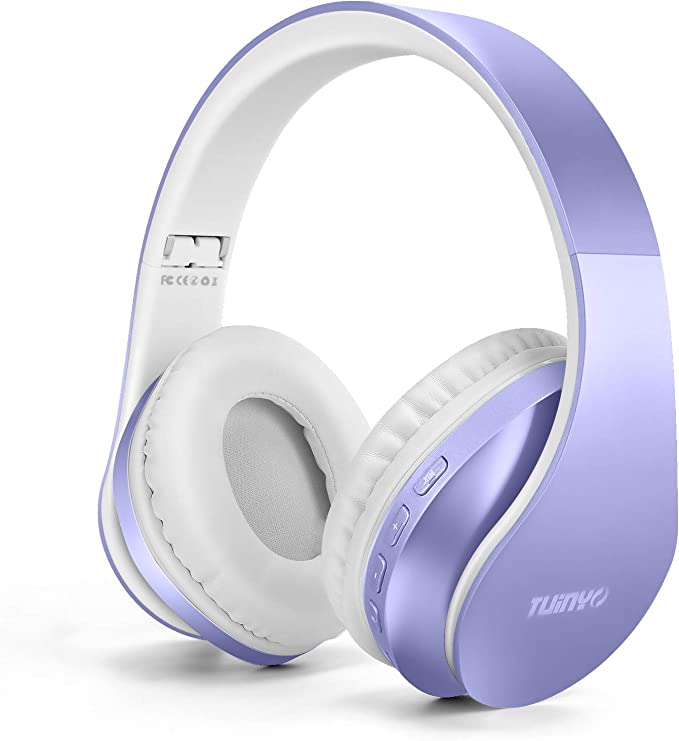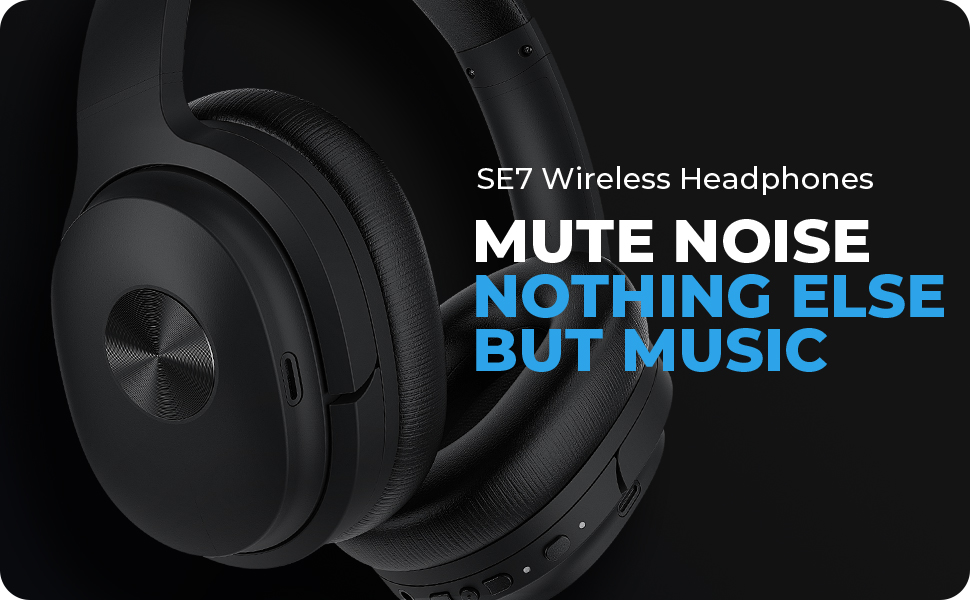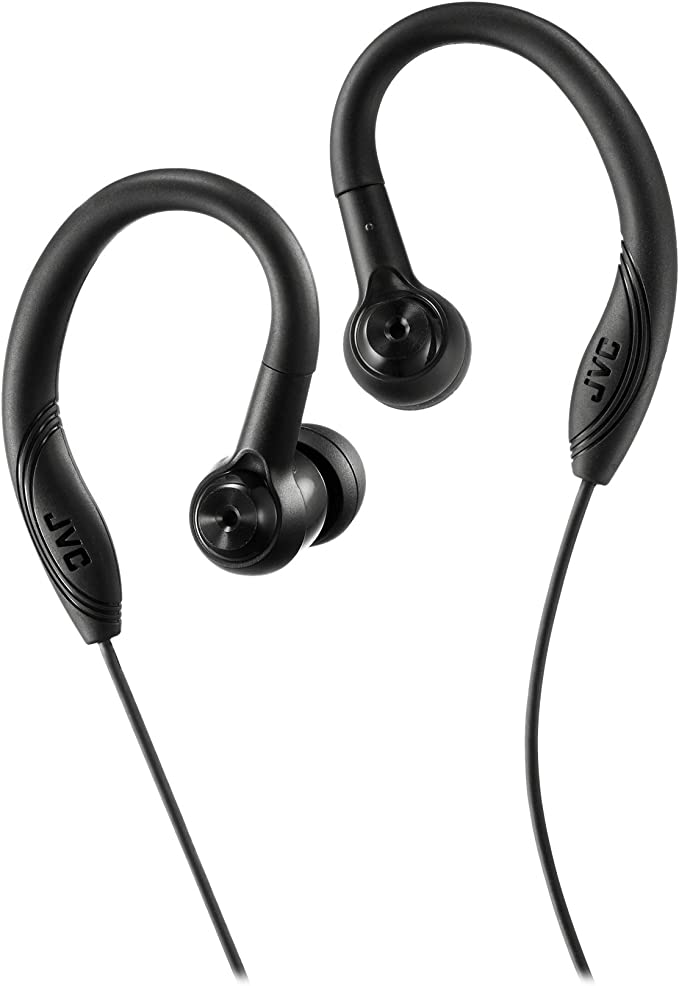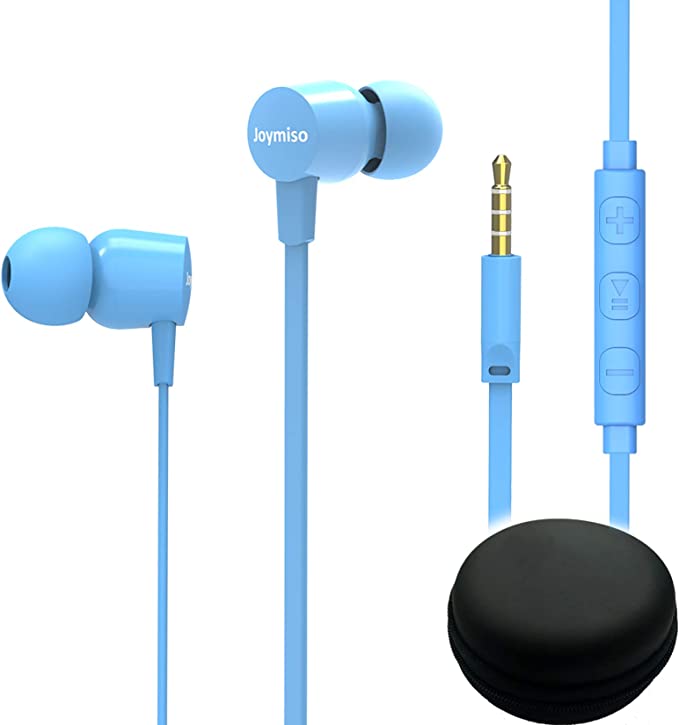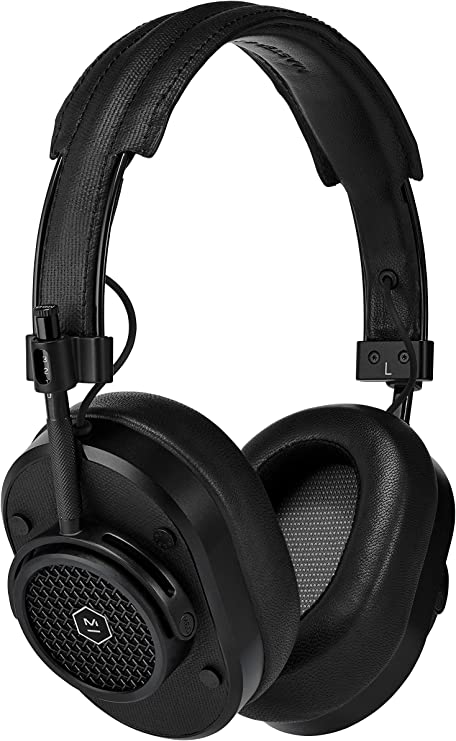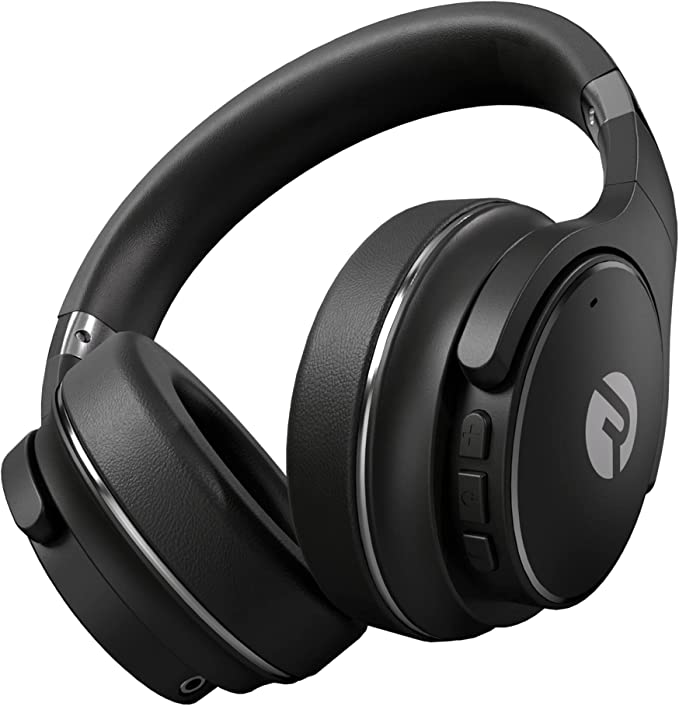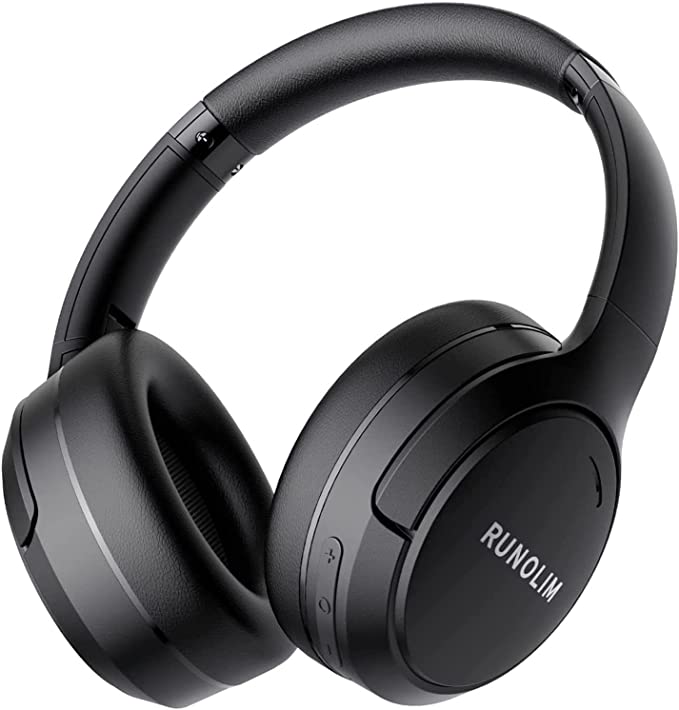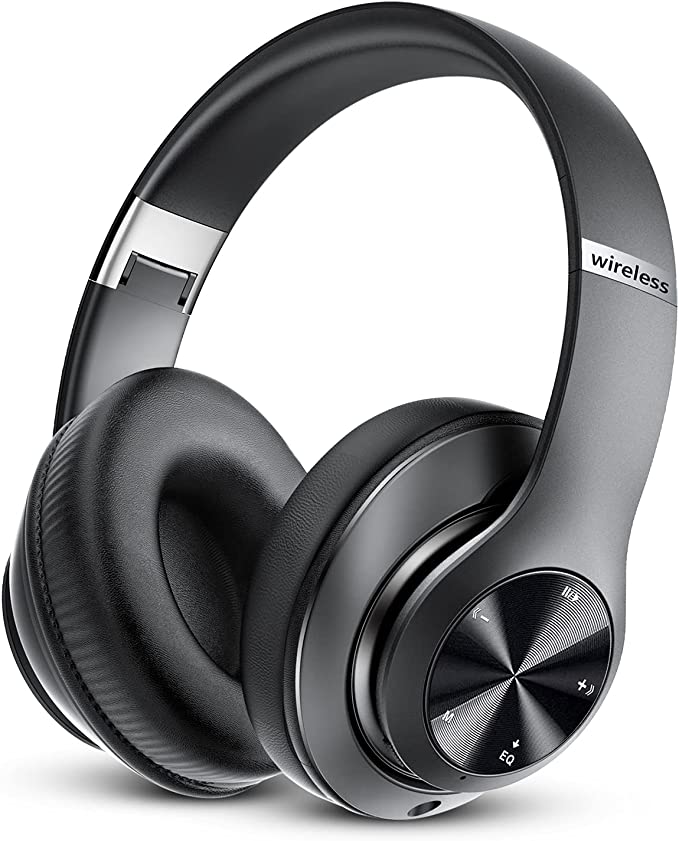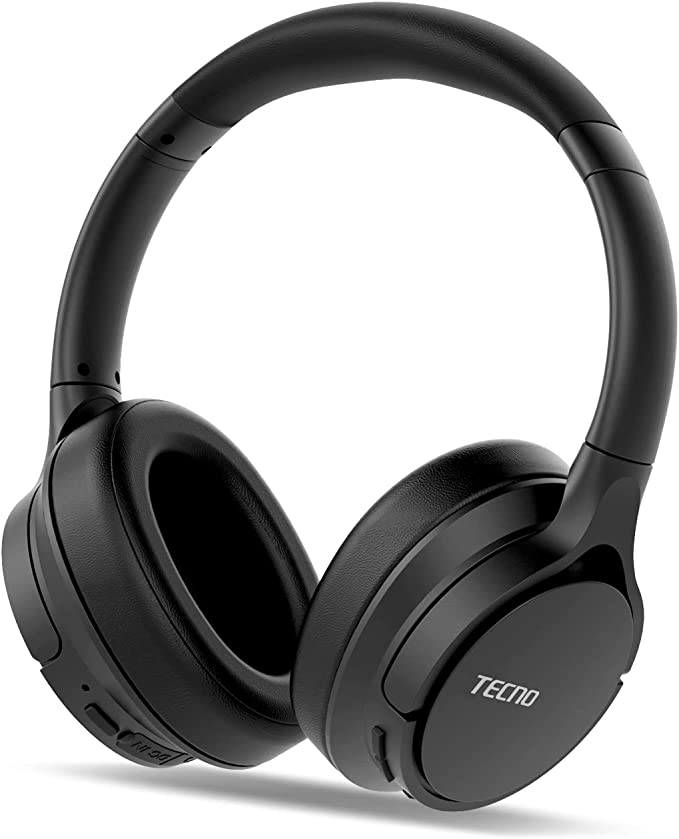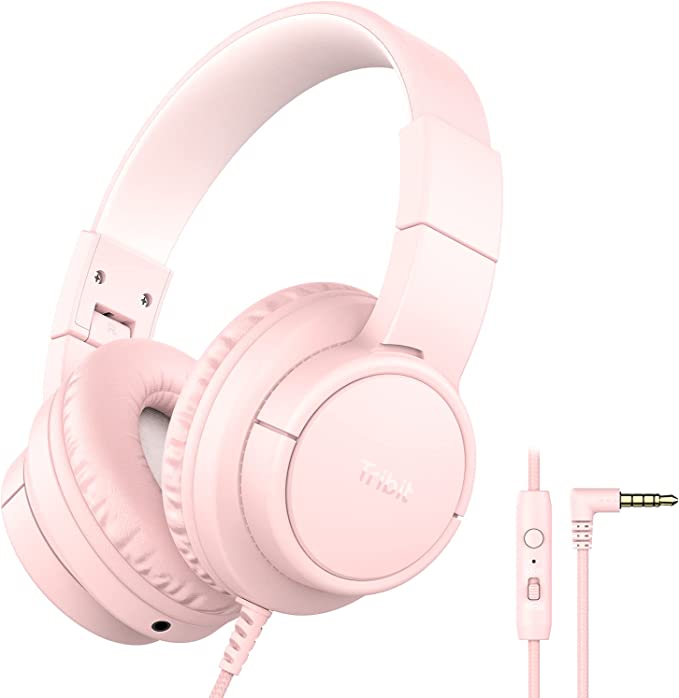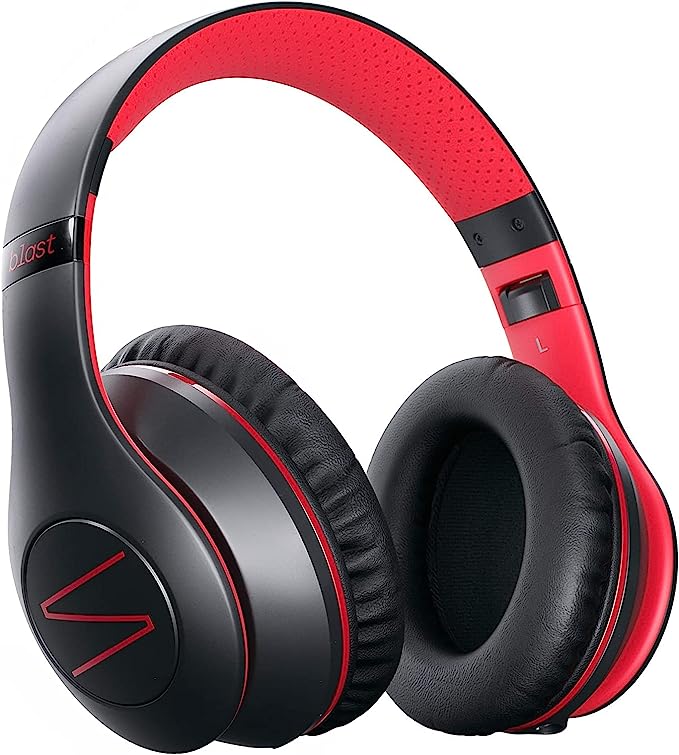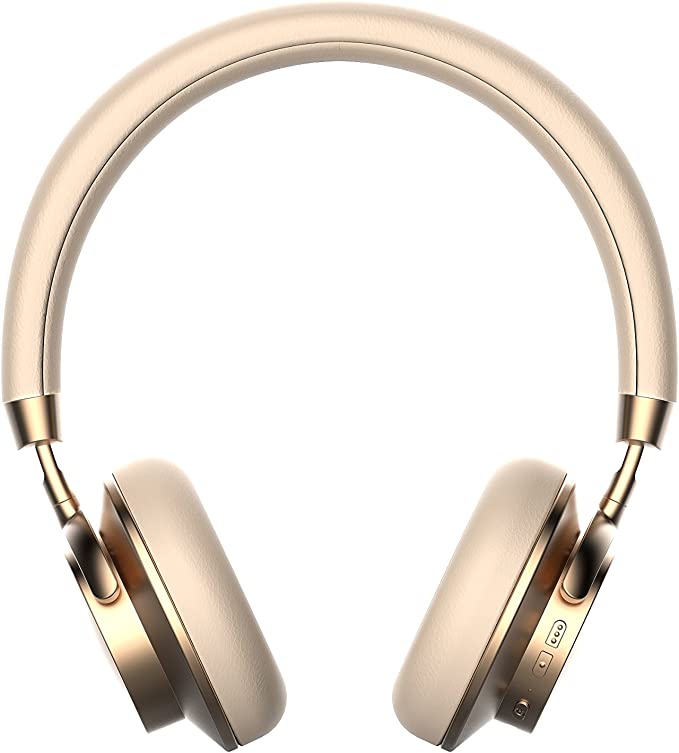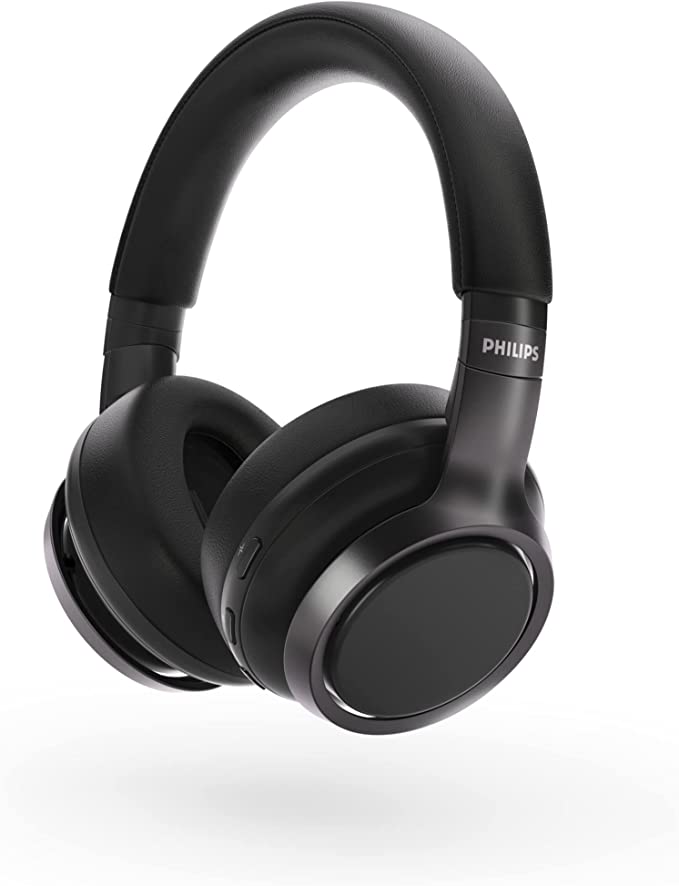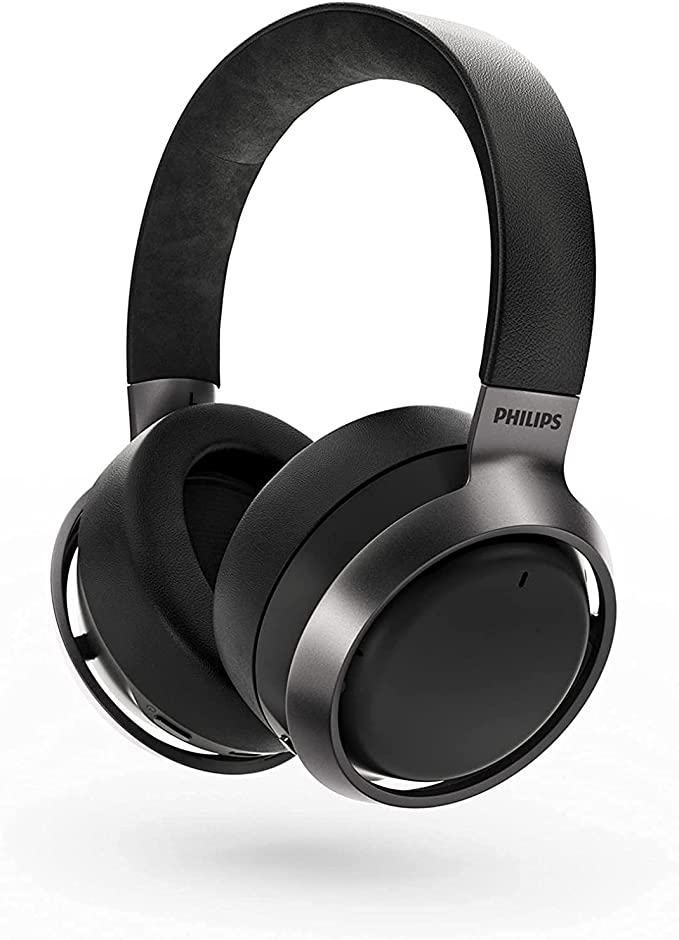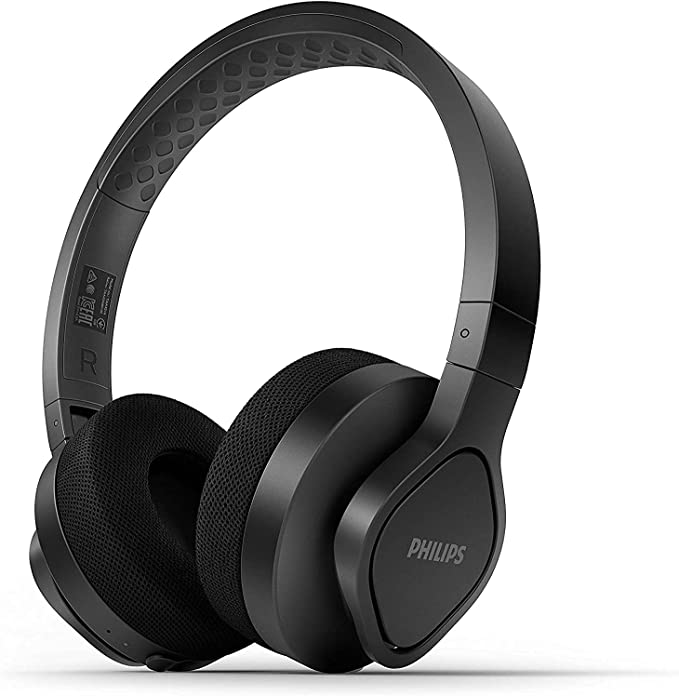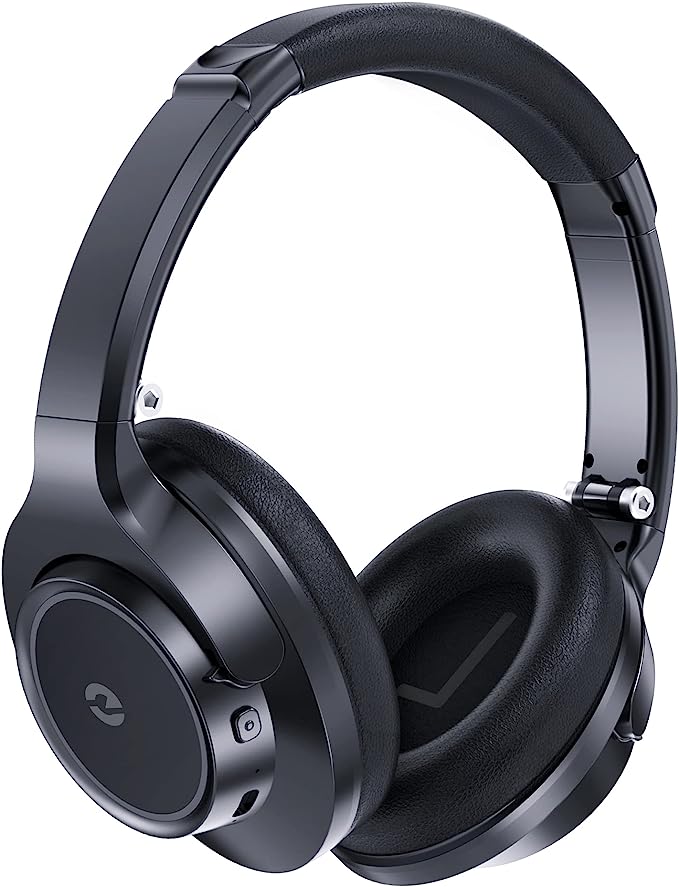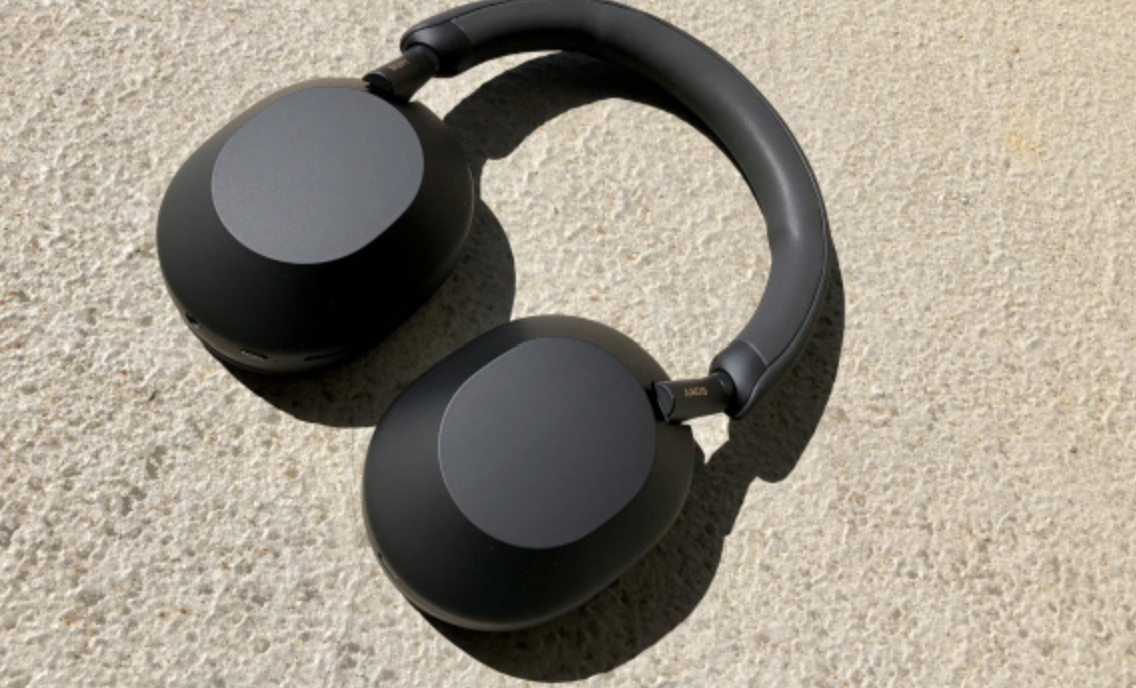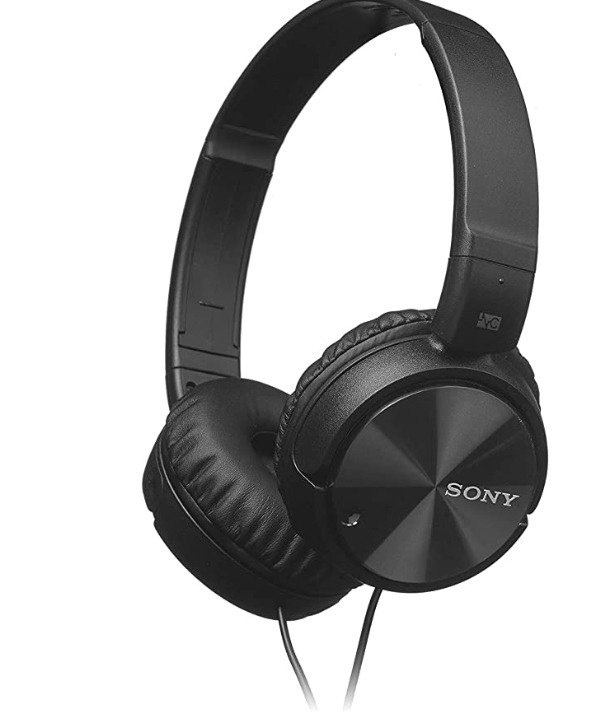OneOdio Pro-30 Headphones: Unpacking the Science of Sound, Comfort, and Versatility
Update on May 30, 2025, 5:21 p.m.
In a world saturated with sound, our headphones have become more than mere accessories; they are our personal portals to universes вниманияof music, captivating podcasts, immersive gaming landscapes, and the quiet focus needed in a bustling world. They cradle our ears, delivering experiences that can stir emotions, ignite imagination, or simply provide a moment of solace. But have you ever paused your playlist and wondered about the intricate science and thoughtful design packed into the device bringing you that joy?
Let’s embark on an enlightening journey, using the OneOdio Pro-30 Over Ear Wired Headphone not merely as a product under review, but as a fascinating case study. Together, we’ll peel back the layers of technical jargon and explore the engineering choices that aim to deliver a rich audio experience, often without breaking the bank. This isn’t just about one set of headphones; it’s about empowering you with the knowledge to appreciate the symphony of science that makes any headphone truly sing.

The Heartbeat of Your Music: Understanding the 50mm Neodymium Drivers
Imagine the engine room of a powerful ship, or the resonant body of a finely crafted cello – this is akin to the role of the drivers within a pair of headphones. They are the heart, the primary transducers, tirelessly converting electrical signals from your device into the sound waves that dance their way to your ears. The OneOdio Pro-30 proudly features large 50-millimeter (mm) dynamic drivers, a specification that often hints at a robust audio character.
But what does “50mm dynamic driver” actually mean for your listening experience? Think of a dynamic driver as a miniature loudspeaker. At its core is a diaphragm, a thin, flexible membrane. Attached to this is a voice coil, a tightly wound wire that sits within a magnetic field, in this case, generated by neodymium magnets. When the audio signal (an electrical current) flows through the voice coil, it becomes an electromagnet, rapidly pushing and pulling against the permanent neodymium magnet. This motion causes the diaphragm to vibrate, and these vibrations create pressure waves in the air – the very essence of sound.
Why does the “50mm” size often draw attention? A larger diaphragm has a greater surface area. Picture a large drum versus a small one; the larger drum can move more air and typically produces deeper, more resonant bass tones. Similarly, a 50mm driver has the potential to move more air than, say, a 40mm driver, which can translate to a fuller, more impactful low-frequency response – that “oomph” or “booming bass” that OneOdio mentions. It’s about creating a foundation of sound that can feel more substantial and enveloping.
Neodymium magnets are the unsung heroes here. They are prized in audio engineering for their powerful magnetic field relative to their size and weight. This strength allows for more efficient driver control, meaning the diaphragm can respond more quickly and accurately to the nuances of the audio signal, contributing to the “clear and crisp tones” alongside that powerful bass. So, when you’re a DJ cueing up a track with a driving bassline, or a gamer caught in the middle of a virtual explosion, these 50mm neodymium drivers are working hard to deliver that visceral impact and clarity.

The Art of “Easy Listening”: Demystifying Impedance and Sensitivity
Beyond the physical size of the drivers, two key electrical specifications profoundly influence how headphones interact with your audio sources: impedance and sensitivity. For the OneOdio Pro-30, these are listed as 32 Ohms (Ω) impedance and 110 decibels (dB) ± 3 dB sensitivity. These numbers might seem abstract, but they tell a crucial story about the headphones’ “electrical appetite” and “loudness potential.”
Let’s start with impedance, measured in Ohms (Ω). You can think of impedance as the headphone’s “resistance” to the electrical audio signal. Imagine water flowing through a pipe: a narrower pipe (higher impedance) requires more pressure (voltage) to deliver the same amount of water (power) as a wider pipe (lower impedance). Headphones with lower impedance, like the Pro-30’s 32 Ohms, are generally “easier to drive.” This means they don’t demand a lot of power from your audio device to reach a satisfying listening volume. This is fantastic news if you plan to use them with everyday devices like smartphones, laptops, or tablets, which typically have less powerful built-in amplifiers compared to dedicated studio equipment.
Next up is sensitivity, rated at 110 dB (plus or minus 3 dB) for the Pro-30. Sensitivity tells you how loud the headphones will play at a given power level (often measured with 1 milliwatt of power, yielding a sound pressure level, or SPL, in decibels). A higher sensitivity figure generally means the headphones can get louder with less input power. So, a sensitivity of 110 dB is quite efficient.
When you combine a relatively low impedance (32 Ohms) with a fairly high sensitivity (110 dB), you get what audio enthusiasts call an “easy-to-drive” headphone. The Pro-30, with these specifications, is designed for versatility. It doesn’t necessitate a bulky, expensive headphone amplifier to sing; it’s engineered to deliver ample volume and clarity whether you’re casually listening to music from your PC or plugging into a professional DJ mixing console. This “plug and play” characteristic is a significant advantage for users who need reliable performance across a spectrum of audio gear.

Painting with Sound: The Full Spectrum of Frequency Response (and the Hi-Res Question)
Every sound we hear, from the deepest rumble of thunder to the highest shimmer of a cymbal, occupies a specific place on the frequency spectrum. Frequency Response is a specification that describes the range of these sound frequencies a pair of headphones can reproduce. For humans, the generally accepted audible range spans from about 20 Hertz (Hz) on the low end (deep bass) to 20,000 Hertz, or 20 kilohertz (kHz), on the high end (piercing treble).
Now, here’s where things get particularly interesting with the OneOdio Pro-30. The product information presents a slight divergence. The main “Product Description” boldly states a Frequency Response of 20 Hz - 40KHz and also carries a “Hi-Res Audio Certified” claim. However, if you dig into the detailed “Product information” table under the “Audio” section on the same Amazon page, it lists “Frequency Response 20000 Hz” and “Frequency Range 20Hz - 20kHz.” This discrepancy is important to address with a clear, scientific lens.
A frequency response of 20Hz - 20kHz means the headphones are designed to cover the entirety of the typical human hearing range, which is excellent. This suggests the potential to reproduce all the fundamental tones and many of the harmonics that give music its richness and character.
The claim of extending to 40kHz, coupled with “Hi-Res Audio Certified,” taps into the “High-Resolution Audio” movement. “Hi-Res Audio” typically refers to audio files and playback equipment that can handle frequencies beyond the standard CD quality (which is effectively limited by that 20kHz human hearing ceiling). The idea is that even if we don’t consciously “hear” these ultrasonic frequencies (above 20kHz), their presence (and the more gentle filtering often used in Hi-Res capable systems) might subtly influence the audible frequencies, potentially leading to a more detailed, spacious, or “airier” sound.
However, the term “Hi-Res Audio Certified” can be complex. Official certification often comes from bodies like the Japan Audio Society (JAS), and requires meeting specific performance criteria. The Pro-30’s product page makes this claim, but without further details on the certifying body or specific test conditions, it’s wise for consumers to view it as an indicator of capability rather than a guarantee of a universally perceived superior experience. The benefits of frequencies above 20kHz are also a subject of ongoing debate within the audio community, with perception varying significantly based on the audio material, the rest of the playback chain, and individual listener acuity.
So, what does this mean for you, the listener? The Pro-30, even if conservatively considered to perform optimally within the 20Hz-20kHz range, is equipped to deliver a full-bodied listening experience. If it accurately extends to 40kHz, it might offer an added dimension for those with high-resolution audio files and a keen ear. The key is to understand that a wide frequency response number alone doesn’t define sound quality; factors like how evenly and accurately those frequencies are reproduced (the “flatness” of the response curve) are just as, if not more, critical. This product information discrepancy highlights the importance of looking at specifications critically and, where possible, relying on diverse sources or personal listening tests.

Your Personal Sound Bubble: The Science of Closed-Back Design and Comfort
Beyond the drivers and electricals, the physical design of headphone earcups plays a monumental role in shaping your listening experience and comfort. The OneOdio Pro-30 features an over-ear, closed-back design. This terminology is crucial. “Over-ear” (also known as circumaural) means the earpads are designed to encircle your ears completely, rather than resting on them. “Closed-back” signifies that the outer shell of the earcups is solid and sealed, with no vents or perforations allowing sound to pass freely in or out.
This closed-back architecture creates a sort of “personal sound bubble” and offers several distinct acoustic and practical advantages:
- Passive Noise Isolation: By forming a seal around your ears, the closed-back design, in conjunction with the protein leather and memory foam earpads, acts as a physical barrier to external sounds. This is passive noise isolation – it doesn’t use electronics to cancel noise (like Active Noise Cancelling headphones do), but rather relies on the physical obstruction of the earcups. This helps you focus on your audio content, whether you’re in a moderately noisy café, a busy office, or simply want to immerse yourself in your music without distraction.
- Enhanced Bass Perception: The sealed chamber created by the closed-back earcups can also have a noticeable effect on low-frequency reproduction. By trapping the sound waves generated by the drivers, especially the bass frequencies, this design can often lead to a more present, punchy, and impactful bass response. It’s like listening to a subwoofer in a well-sealed room versus an open field; the enclosure helps to reinforce those low notes. This aligns well with OneOdio’s emphasis on the Pro-30’s “powerful bass.”
- Minimized Sound Leakage: Conversely, the closed design also significantly reduces the amount of sound that escapes from the headphones into your surrounding environment. This is a considerate feature if you’re listening in close proximity to others, such as in a library, on public transport, or in a shared workspace. Your music stays largely yours.
Comfort, especially for extended listening sessions (as a DJ, producer, gamer, or avid music fan might undertake), is paramount. The Pro-30 utilizes protein leather for its earpads, a synthetic material engineered to mimic the softness and feel of genuine leather while often offering better durability and breathability. Beneath this, memory foam padding adapts to the unique contours around your ears, aiming to distribute pressure evenly and create a snug, comfortable seal. The adjustable headband further allows for a customized fit.
However, it’s also worth noting a practical consideration with any predominantly plastic headphone construction, a point sometimes echoed in user feedback for various models in this category: the long-term durability of hinges and swivel points can be a concern with very heavy or rough use. This is often a trade-off in achieving a certain price point while packing in features. For the Pro-30, the design aims for a balance of functional comfort and robust utility.

Connections That Matter: Cables, Shareport, and Ready-for-Anything Versatility
In an increasingly wireless world, a pair of wired headphones like the OneOdio Pro-30 makes a deliberate statement, often prioritizing audio fidelity, zero latency, and the reliability of a physical connection. The Pro-30 leans into this with a remarkably versatile connectivity suite, aiming to ensure you’re “ready for anything” and, as OneOdio puts it, needing “No More Adapter.”
A key aspect of this versatility is its detachable dual-cable system. This is a significant plus for several reasons:
- Durability and Reparability: Cables are often the first point of failure in headphones. A detachable cable can be easily replaced if damaged, extending the lifespan of the headphones themselves.
- Scenario-Specific Cables: The Pro-30 typically comes with two distinct cables:
- A DJ-style coiled cord, often extending to around 9.8 feet (3 meters). This cable is usually terminated with a 3.5mm plug on one end and a robust 6.35mm (1/4-inch) plug on the other. The coiled section prevents tangling and provides flexibility of movement, while the 6.35mm plug is the standard for professional audio gear like DJ mixers, audio interfaces, amplifiers, and some musical instruments (keyboards, guitars through processors).
- A second, often straight, cable with a 3.5mm plug at both ends. Crucially, this cable frequently incorporates an inline microphone and a control button, making it ideal for connecting to smartphones, tablets, laptops, and PCs for music playback, online calls, and voice assistant interaction.
This dual-cable offering means you’re not fumbling for adapters when switching from your DJ deck to your laptop. The headphones themselves feature both a 3.5mm and a 6.35mm jack, typically one on each earcup. This leads us to another of OneOdio’s signature features: Shareport Technology.
While the term might sound complex, the Shareport concept is elegantly simple and incredibly useful. Because the headphones have two input jacks, you can plug your primary audio source into one (say, the 6.35mm jack from your mixer). Then, the other unused jack (the 3.5mm one in this example) can act as an output. You can plug another pair of headphones (any brand, as long as it has a compatible plug) into this spare jack, and voila – you’re sharing your audio stream with a friend or collaborator. This is perfect for musicians working together, two people watching a movie on a single tablet during a commute, or a DJ wanting to let someone else preview a track. It effectively turns your Pro-30 into an audio splitter, no extra dongles required.
Adding to the flexibility are the 90° swiveling earcups. This is a classic DJ feature, allowing for comfortable single-ear monitoring – keeping one ear on the main mix from the PA and the other on the cued track in the headphone. But it’s also handy for anyone who needs to quickly hear their surroundings without taking the headphones completely off. Finally, the foldable design enhances portability, allowing the Pro-30 to be collapsed into a more compact form for stowing in the included carrying pouch, making them a more convenient travel companion.
Epilogue: Beyond the Specs – Finding Your Sound, Wisely
The OneOdio Pro-30 headphones, as we’ve explored, are a tapestry woven from numerous threads of audio science, ergonomic considerations, and clever connectivity solutions. They represent a set of engineering choices aimed at delivering a specific user experience – one that emphasizes powerful bass, clear highs, comfortable long-term wear, and exceptional versatility, particularly for those engaging with both consumer and pro-audio equipment.
Understanding the science behind the specifications – what a 50mm driver truly implies, how impedance and sensitivity dictate compatibility, the nuances of frequency response claims, and the acoustic impact of a closed-back design – empowers you. It allows you to move beyond marketing superlatives and make informed decisions, not just about the Pro-30, but about any audio gear you might consider.
In an era where wireless audio often takes center stage, the Pro-30 stands as a testament to the enduring qualities of a reliable wired connection: uncompromised signal integrity, zero latency (critical for DJs and musicians), and no batteries to worry about. It seeks to bridge the gap, offering features often found in more specialized “studio” or “DJ” headphones at a price point accessible to a broader audience.
Ultimately, the journey into the science of sound is a personal one. While specifications and design provide a roadmap, your own ears and preferences are the final arbiters. The OneOdio Pro-30, with its blend of features, invites you to listen, to connect, and perhaps, to appreciate a little more deeply the intricate dance of physics and engineering that brings your favorite audio to life. The best headphone, after all, is the one that forges a seamless, enjoyable connection between you and the sounds that move you.
